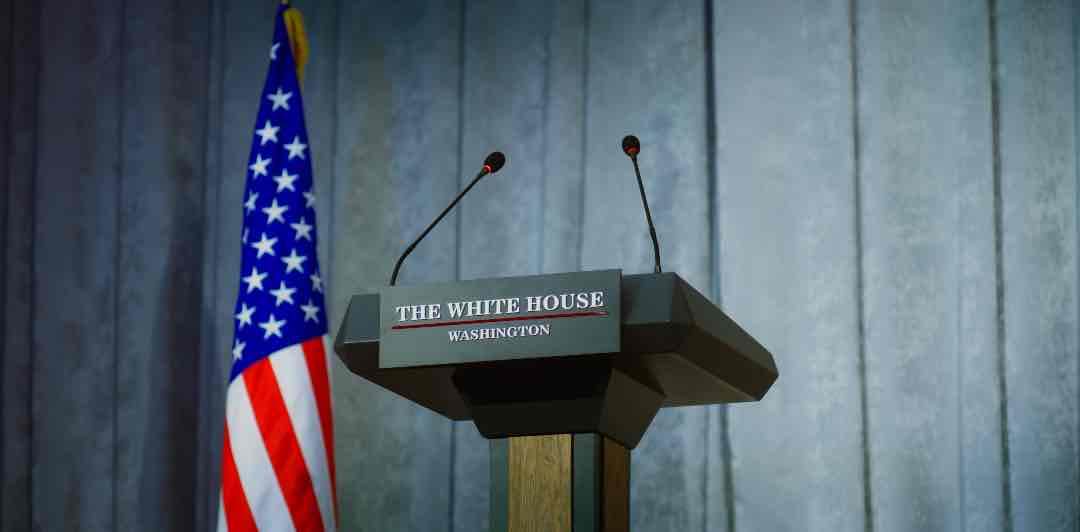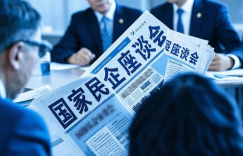
On January 20, US time, Trump officially took office and became the new US president. Today we will talk about what impact Trump’s coming to power will have on China?
In fact, I don’t like to talk about international issues, but because the United States is our biggest external variable, many key domestic policies are closely related to responding to the challenges of the United States, and are even the starting point of some policies. Therefore, the Sino-US issue is essentially an important issue for China. This matter is very complicated, so in this lecture I will only talk about the key logic that is closely related to us, and I will not cover everything; and I will simplify some dimensions so that you can understand, so the wording may not be so impeccable and accurate. I declare in advance that today’s analysis is all personal perspectives and is for reference only.
Okay, let’s get started.
Once tariffs are increased, the impact on the industry
After Trump came to power, the thing we care about most is definitely foreign trade and tariffs. Trump has been spreading rumors that he will impose a 60% tariff on all goods from China. Of course, some experts say that Trump will not dare or will not do this in the end, but we must be prepared for the worst and respond in advance.
You should know that before 2018, the average tariff rate for Chinese goods to the United States was 3.4%. After the trade war began, the United States imposed tariffs all the way. By 2024, the average tariff rate for Chinese goods to the United States reached 19.3%.
If Trump wants to raise tariffs to more than 60%, a possible way is to pass a bill through the US Congress to cancel China’s most-favored-nation treatment. I will talk about the cancellation of most-favored-nation treatment and its possible impact in the next two days. Remember to listen.
It takes a vote in Congress to revoke China’s most-favored-nation treatment. If Trump “seeks for speed”, it is likely that he will launch a trade investigation based on the 232, 201 and 301 clauses used when imposing tariffs in 2018, so that tariffs on some of the products may be implemented within the shortest six months. In other words, at the earliest, there is still a six-month window. In the past few months, many companies have been rushing to export, and in the next six months, they will continue to rush, because we can only rush for time, and the first bit is a bit.
If the tax is increased significantly, the impact on China will mainly be on these two types of products: one is consumer goods, especially labor-intensive products such as textiles, clothing, furniture and home appliances, rubber and plastics, toys, wood products, and paper products. The other is general machinery, mobile phones, computers, electronic components, electrical equipment, precision instruments and other electronic equipment products.
Among them, the textile and clothing, computer communications, culture, sports and entertainment, leather shoes, and furniture industries will be greatly affected. Because these industries are generally highly dependent on exports and are mostly labor-intensive industries, the decline in exports will be more obvious when tariffs rise. For example, the current general profit margin of the textile industry is less than 5%. If a 60% tariff is imposed, the biggest possibility or even the only choice is that companies will no longer export to the United States.
In addition, the United States is unlikely to raise tariffs to 60% at one time, but will advance in batches like in 2018 and gradually increase tariffs. For example, first increase tariffs for the midstream equipment manufacturing industry, such as general equipment, special equipment, electrical machinery, and other industries with relatively high technological content, and then gradually expand to downstream consumer goods and industries with high dependence in the later stage. Knowing this order, you will have a rough idea in your mind. You can make corresponding preparations according to the situation of your industry and seize the window period.
Of course, you don’t need to be too pessimistic. The US tariff increase is a typical case of killing one thousand enemies and losing eight hundred or even one thousand of itself. The game between big countries is about endurance and bargaining chips. China and Chinese companies are not without ways to deal with it. For example, we will also impose high tariffs on American products. For example, many Chinese companies are now engaged in re-export trade and going overseas. I will mention this part later when I talk about the impact of the cancellation of “most-favored-nation treatment”.
The impact of the Fed’s policy on China’s monetary policy
After talking about foreign trade and tariffs, let’s talk about what impact Trump will have on China’s monetary policy if he affects the Fed. We know that the US dollar is the only world currency, and you can partially think that the Fed is actually the world’s central bank. Therefore, the Fed’s decision has a great impact on the whole world, including China.
If we summarize the core policies that Trump promised for his future administration, they can be roughly summarized into five points:
(1) Comprehensively increase tariffs on other countries;
(2) Promise to lower interest rates;
(3) Large-scale tax cuts for enterprises and residents;
(4) Deport a large number of illegal immigrants;
(5) Vigorously develop traditional petrochemical energy and restrict clean energy.
These measures will become “inflation catalysts” in the United States to a considerable extent, which may push up prices in the United States and trigger a new round of inflation. This is a direct impact on the United States, and you just need to know the conclusion. Next, I will talk in detail about how Trump’s policies will affect the Federal Reserve and then China.
You must know that the United States has experienced a round of inflation in the past two years. The CPI, or consumer price index, once soared to 9.1%. The Federal Reserve raised interest rates to 5.5% through 11 consecutive rounds of interest rate hikes to get inflation back below 3%. If inflation in the United States rises again in 2025 due to Trump’s policies, the Federal Reserve’s room for interest rate cuts will be greatly reduced. On December 18, 2024, the Federal Reserve stated in its interest rate meeting that the number of interest rate cuts in 2025 will be reduced from 4 to 2, and the time of the first interest rate cut will be significantly postponed from March expected by the market to after July.
Once the Federal Reserve takes this attitude, it is not a good thing for China. Because if market investors expect that the Federal Reserve will no longer cut interest rates significantly and the US interest rate is still so high, then capital may accelerate into the United States, and the strong dollar phenomenon will strike again. Simply put, the money in the international market is siphoned by the high interest rates in the United States. This will have an impact on the RMB exchange rate and the domestic stock market. Since the beginning of the year, the RMB exchange rate and the stock market have both experienced a wave of declines, which is a confirmation.
If the Federal Reserve slows down interest rate cuts or even turns to raising interest rates, China may not continue to cut interest rates because it does not want the interest rate gap between China and the United States to widen, leading to capital outflows. In this way, our monetary policy space will become smaller again. Because it is impossible to invest more money in the market through low interest rates; or although the interest rate is nominally cut, the actual interest rate is still raised by tightening liquidity. The mechanism here is quite complicated, so I won’t elaborate on it here. In short, the intensity of money supply will be limited, and the intensity and rhythm of economic stimulus will be delayed. So I suggest you keep an eye on the Fed’s interest rate cut statement, which will be one of the key indicators for us to judge the node of China’s monetary policy adjustment.
Objectively speaking, the above factors do have a certain degree of negative impact on our current stock market.
However, for Chinese companies, structural benefits still exist. Let’s give a few simple examples:
For example, Trump wants to withdraw from the climate agreement and increase US oil production after taking office, which will make international oil prices enter the “low price zone” in the short term, which will benefit the first, second and third-level industries with crude oil as the cost in the short term. In addition, these practices will also hand over the commanding heights of green and clean technology to other countries, such as China. Although it may be negative for wind power, photovoltaics and nuclear energy in the short term, in the long run, Trump has chosen to return to the old energy track. Objectively, our related Chinese companies have the opportunity to occupy a better ecological niche in the field of new energy.
Another key opportunity is AI. An important reason why Trump returned to the oil and gas track is that the US power grid is too poor. It is basically a power grid facility from the 1950s and 1960s, which cannot support the development of new energy. In addition, most of the US power grids are private companies, so they have neither the ability nor the interest to update the power grid facilities on a large scale. The government wants to update it uniformly, but it is difficult to achieve in the short term. The situation in Europe is the same. But now AI computing power requires a lot of electricity, and the backward power grids in the United States and Europe cannot withstand the centralized power explosion. Therefore, from the perspective of electricity alone, China still has a chance in the Sino-US AI competition.
In addition, Trump should continue to implement more stringent technology embargoes and technology blockades, which is also a good thing for industries that require domestic substitution and technology backup. Since the United States does not allow us to use their technology, we will do it ourselves, and many key industries will be re-made. This is a copy and paste of domestic industries and a copy and paste of wealth.
Trump’s suspenseful statement: The United States and China can solve all problems in the world together
Finally, based on Trump’s current attitude, we analyze the possible impact on China’s diplomatic strategy.
First, due to Trump’s isolation policy in the international arena, China has an opportunity to repair its relations with key countries.
Looking back at the four years of Biden’s administration, Biden advocated the construction of a “global alliance” on the China issue, pulling Europe, Japan, South Korea, Australia, New Zealand, the Middle East and other younger brothers to contain and blockade China. At the same time, he promoted policies such as “friendly shore outsourcing” and “nearshore outsourcing”, which is to require the supply chains of domestic and allied companies in China to be transferred from China to other countries, which is also part of decoupling from China. Simply put, the younger brothers are all on the same side. At this time, it is difficult for China to establish good relations with key countries such as Europe, Japan and South Korea.
Now Trump is pursuing the “America First” idea, believing that other allies should not take advantage of the United States. Specifically, he requires Europe to pay NATO military expenses and Japan and South Korea to bear the expenses of US troops stationed there. This will inevitably lead to tensions in relations between the United States and other Western allies. Simply put, the big brother is not good enough.
This actually gives us the opportunity to repair relations with various key countries. For example, China has recently reached an electric vehicle export agreement with Europe; for example, the Japanese Foreign Minister visited China, and Sino-Japanese relations have significantly warmed up; for example, last year, the Chinese Premier visited Australia, and then China, Australia, New Zealand and other countries started a new wave of economic and trade booms.
Second, the great rift in the United States is behind Trump’s coming to power, which may make him focus more on domestic affairs in the early stage, giving China more time to develop.
From the perspective of the political power situation in the United States, the internal power rift is still huge. In fact, there is not only a rift between the Democratic and Republican parties in the United States, but also differences between the Silicon Valley oligarchs who support Trump’s coming to power and the white lower class. Last year, I attended an internal exchange meeting of Li Cheng, the former director of the John Thornton China Center of the world-renowned Brookings Institution. Dr. Li Cheng believed that the internal rift in the United States has reached the point where there is even a risk of “civil war”. I think this will force Trump to focus more on domestic affairs, which is not a bad thing for China, which is in urgent need of development time.
Third, Trump’s statement that “the United States and China can solve all the problems in the world together” is intriguing. It may be a hint or a temptation.
At present, China and the United States are far ahead in the fields of economy, science and technology, and military, especially in the field of artificial intelligence, while other countries are relatively declining, especially the rising channel of third world countries is becoming more and more difficult. Europe and the Middle East are mired in war and are unable to extricate themselves, not to mention.
Faced with the current situation, Trump may have a unique way of thinking on geopolitical issues regarding China. On the one hand, he will continue to maintain and expand the United States’ advantage over China, but at the same time he also emphasized that the United States and China can solve all problems in the world together. Whether this sentence is a hint or an inducement, it is still impossible to judge, but it is worth pondering.



